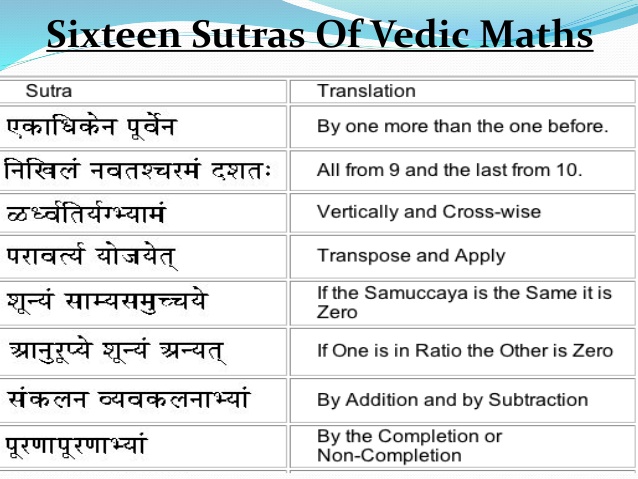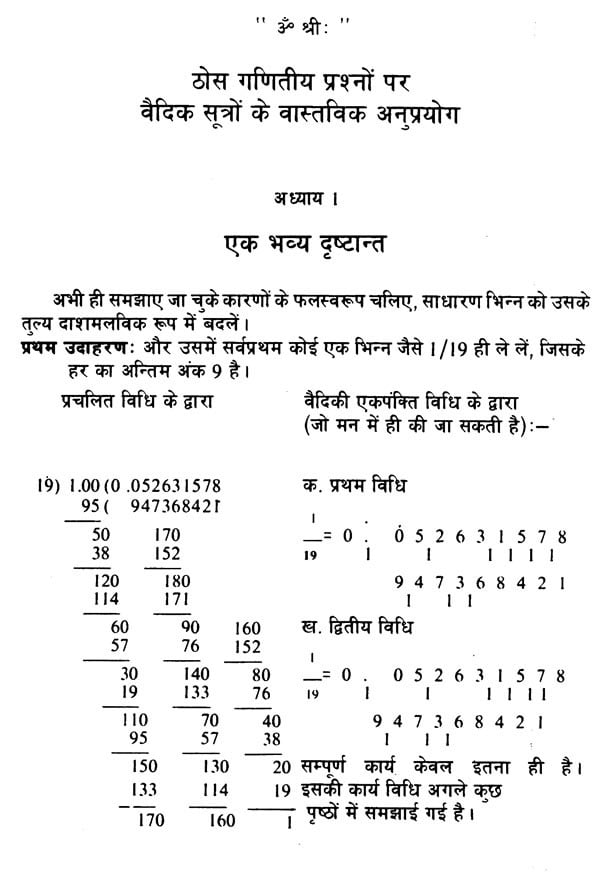

The first thing to be noted is that divisor 12, is near 10, so the above sutra can be applied. This is used to solve division problems when the divisor is a little greater than the nearest power of 10. PARAVARTYA YOJAYET ( Transpose and adjust)

This is used for multiplications and the formula used is explained below. URDHVA-TRIBHAGYAM (vertically and crosswise) The last number is 8 and this is subtracted from 10 and the next 8 is subtracted from 9, all other numbers are subtracted by 9 and the result comes out almost orally. This sutra is very commonly used in the subtraction of a number from the powers of 10. NIKHILAM NAVATASHCARAMAM DASHATAH (all from 9 and last from 10) The answer has come without doing any elaborate calculation. = (first digit x one more than first digit) (product of unit digits of both the number) Very useful in finding the product of numbers, if the sum of unit digits of the two numbers totals to 10. THE 16 SUTRASĮKADHIKENA PURVENA (by one more than the previous) Through this article, an attempt has been made to bring this knowledge to you in a simple and lucid language, with examples.

The Atharvaveda is said to have lots of information on science and mathematics and it is from there, Shankaracharya of Goverdhan peeth puri, decoded the whole information and presented it in the form of 16 sutras. Vedic Maths is based on sixteen sutras, which were unravelled by Swami Bharati Krishna tirtha Ji Maharaj, the Shankaracharya of Govardhan peeth, puri. Calculations are an integral part of any profession today and the ability to do it quickly and accurately definitely is an important skill that anyone would desire to have. Vedic mathematics these days is gaining popularity because of its speedy and accurate calculations.


 0 kommentar(er)
0 kommentar(er)
